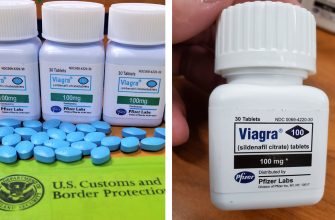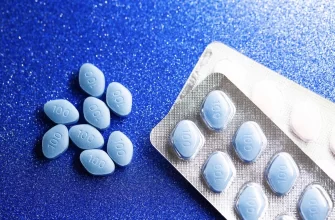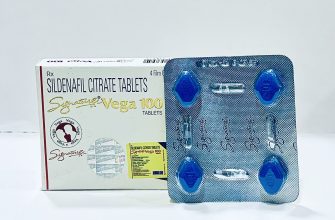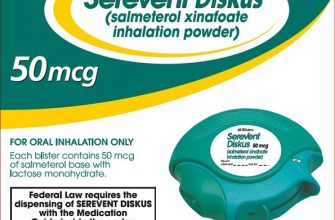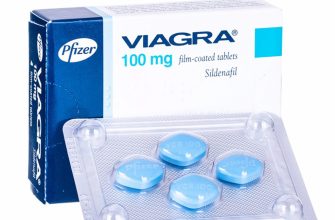Need to reduce inflammation without Prednisolone? Focus on a multi-pronged approach combining diet, exercise, and targeted supplements. This strategy offers a holistic path to managing inflammation, minimizing reliance on corticosteroids.
Prioritize anti-inflammatory foods. Include plenty of colorful fruits and vegetables rich in antioxidants, such as berries, leafy greens, and broccoli. Lean protein sources like fish (rich in Omega-3s) and poultry are also beneficial. Conversely, minimize processed foods, sugary drinks, and saturated fats, known inflammation triggers.
Regular exercise plays a crucial role. Aim for at least 150 minutes of moderate-intensity aerobic activity per week. Activities like brisk walking, swimming, or cycling improve circulation and reduce inflammation. Incorporate strength training twice a week to build muscle mass, further supporting your body’s natural anti-inflammatory response.
Consider natural supplements. Curcumin (found in turmeric), ginger, and boswellia are known for their anti-inflammatory properties. However, always consult your doctor before starting any new supplement regimen to ensure it’s safe and suitable for your individual needs and potential interactions with other medications.
Remember, consistent effort is key. Managing inflammation is a long-term process, requiring dedication and a proactive approach to lifestyle changes. This detailed plan offers a framework; adjust it based on your specific health needs and consult your healthcare provider for personalized advice.
- Prednisolone-Free: A Comprehensive Guide
- Understanding Prednisolone Withdrawal Symptoms
- Alternative Treatments for Prednisolone-Dependent Conditions
- Biologics and Targeted Therapies
- Non-Pharmacological Approaches
- Tapering Off Prednisolone: A Safe and Effective Strategy
- Understanding Your Tapering Schedule
- Managing Potential Withdrawal Symptoms
- Monitoring Your Progress
- Alternative Treatments
- Patience and Persistence
- Managing Side Effects During Prednisolone Reduction
- Long-Term Management After Prednisolone Cessation
- Maintaining a Prednisolone-Free Lifestyle
Prednisolone-Free: A Comprehensive Guide
Consult your doctor before making any changes to your medication regimen. Prednisolone withdrawal requires careful management.
Gradual tapering is key. Your physician will create a personalized plan, slowly reducing your dose over weeks or months, depending on your individual needs and health history. Rapid withdrawal can lead to serious complications.
Monitor your symptoms closely. Report any new or worsening symptoms, such as fatigue, joint pain, or skin changes, to your doctor immediately. This allows for timely adjustments to your tapering schedule.
Consider alternative therapies. Your doctor may recommend supplements, lifestyle changes, or other medications to manage your condition while you wean off prednisolone. These may include dietary adjustments, increased physical activity, or specific alternative treatments.
| Symptom | Possible Cause | Action |
|---|---|---|
| Fatigue | Prednisolone withdrawal | Report to doctor; consider rest and gradual increase in activity. |
| Joint pain | Inflammation; prednisolone withdrawal | Report to doctor; consider over-the-counter pain relief. |
| Skin changes | Prednisolone withdrawal; other conditions | Report to doctor; discuss potential treatments. |
Maintain open communication with your healthcare provider. Regular check-ups and blood tests will help track your progress and make necessary adjustments to your treatment plan. This ensures you remain healthy throughout the process.
Remember, everyone’s experience with prednisolone withdrawal is unique. Patience and close collaboration with your doctor are crucial for a safe and successful transition to a prednisolone-free life.
Understanding Prednisolone Withdrawal Symptoms
Expect gradual tapering of Prednisolone to minimize withdrawal effects. Your doctor will create a personalized plan.
Common symptoms include fatigue, muscle weakness, and joint pain. These can range from mild discomfort to significant limitations depending on the dosage and duration of Prednisolone use.
You might experience changes in mood, including increased anxiety, depression, or irritability. These emotional shifts are quite common and usually temporary.
Some individuals report gastrointestinal issues like nausea, vomiting, or diarrhea. Proper hydration and a bland diet can help manage these symptoms.
Low blood pressure (hypotension) is a possibility. Rise slowly from a seated or lying position to prevent dizziness or fainting.
Increased susceptibility to infection is another potential side effect. Practicing good hygiene and avoiding sick individuals is important.
Skin changes, such as thinning skin or easy bruising, can occur. Gentle skin care and avoiding harsh chemicals is recommended.
Weight gain from fluid retention might decrease during withdrawal. Maintain a healthy diet and exercise regime.
Consult your doctor immediately if you experience severe symptoms or any unexpected changes in your health. They can adjust your tapering schedule or provide supportive care.
Remember, everyone’s experience is unique. Open communication with your doctor is key to managing your withdrawal successfully.
Alternative Treatments for Prednisolone-Dependent Conditions
Consider lifestyle modifications. Regular exercise, a balanced diet rich in anti-inflammatory foods (like fruits, vegetables, and omega-3 fatty acids), and stress management techniques like yoga or meditation can significantly reduce inflammation and dependence on prednisolone. Aim for at least 30 minutes of moderate-intensity exercise most days of the week.
Biologics and Targeted Therapies
Biologics, such as monoclonal antibodies, target specific immune system components causing inflammation. Examples include infliximab, adalimumab, and tocilizumab. These medications offer a targeted approach, reducing side effects compared to prednisolone. Your doctor can assess your suitability for these treatments. Remember to discuss potential risks and benefits.
Non-Pharmacological Approaches
Acupuncture and physiotherapy can be beneficial for managing pain and inflammation associated with certain conditions requiring prednisolone. Physiotherapy, in particular, focuses on strengthening weakened muscles and improving joint mobility. These therapies should complement, not replace, medical advice.
Consult your doctor or a qualified healthcare professional to determine the best alternative treatment plan for your specific condition and needs. They can help you develop a personalized strategy to minimize your reliance on prednisolone and improve your overall health.
Tapering Off Prednisolone: A Safe and Effective Strategy
Reduce your prednisolone dose gradually, following your doctor’s specific instructions. A common approach involves decreasing the dose by a small amount at regular intervals, usually every few days or weeks.
Understanding Your Tapering Schedule
Your doctor will create a personalized tapering plan based on your individual needs and medical history. This plan is crucial for minimizing withdrawal symptoms. Expect close monitoring. Regular check-ups allow your doctor to assess your progress and adjust the schedule if needed.
- Typical Schedule Example: A common starting point might be a 5mg reduction every 3-7 days, but this varies greatly. Never alter your schedule without consulting your physician.
- Factors influencing the schedule: The duration of prednisolone use, your current dose, and your overall health all play significant roles.
Managing Potential Withdrawal Symptoms
Reducing prednisolone can cause side effects. These vary widely depending on the individual and the dosage.
- Common symptoms: These include fatigue, muscle weakness, joint pain, and mood changes.
- Mitigation strategies: Discuss these potential effects with your doctor beforehand. They might recommend strategies to manage these issues, which might include increased rest, nutritional support, or additional medication in certain cases.
Monitoring Your Progress
Maintain open communication with your doctor throughout the tapering process. Report any new or worsening symptoms immediately. They will help determine if adjustments to the schedule are necessary.
- Regular blood tests: These help monitor your adrenal function and overall health.
- Scheduled appointments: Keep all scheduled appointments for close monitoring.
Alternative Treatments
Your doctor may explore alternative treatments to manage your underlying condition. This could help lessen your reliance on prednisolone and expedite a successful taper.
Patience and Persistence
Successfully tapering off prednisolone requires patience and diligence. Adherence to your doctor’s plan is essential for a safe and healthy transition. Remember, gradual reduction is key.
Managing Side Effects During Prednisolone Reduction
Gradually reduce your Prednisolone dose to minimize side effects. Your doctor will create a personalized tapering schedule; strictly follow it.
Expect fatigue and muscle weakness. Increase rest periods and engage in gentle exercise, like walking, as tolerated.
Manage increased appetite with mindful eating. Choose nutritious foods in smaller portions, and stay hydrated.
Address mood changes with open communication. Talk to your doctor or a therapist about any feelings of anxiety or depression.
Monitor blood sugar levels regularly, especially if you have diabetes. Adjust your diabetes medication as advised by your doctor.
Report any significant weight gain to your physician. They may suggest dietary adjustments or other interventions.
Maintain good bone health through calcium and vitamin D supplementation. Discuss this with your doctor.
Pay attention to your skin. Report any bruising, thinning, or changes in skin color.
Stay connected with your healthcare team. Report any concerning symptoms immediately.
Consider keeping a journal to track your symptoms and medication adjustments. This aids communication with your doctor.
Long-Term Management After Prednisolone Cessation
Schedule regular follow-up appointments with your doctor. These visits allow for monitoring of your condition and adjustments to your treatment plan as needed.
Maintain a healthy lifestyle. This includes a balanced diet rich in fruits, vegetables, and lean protein, and regular exercise. Aim for at least 30 minutes of moderate-intensity exercise most days of the week.
Prioritize stress management techniques. Consider yoga, meditation, or deep breathing exercises to help manage stress levels, which can impact your overall health and potentially exacerbate underlying conditions.
Gradually reduce prednisolone dosage under strict medical supervision. Never stop taking prednisolone abruptly; this can lead to serious health complications.
Communicate openly with your healthcare team. Report any new symptoms, concerns, or changes in your health promptly. This ensures timely intervention and adjustments to your care plan.
Understand potential long-term effects. Your doctor can discuss any potential long-term effects of prednisolone use and how to manage them. This proactive approach allows you to address potential issues before they become significant.
Take prescribed medications as directed. Adherence to your medication regimen is critical for managing your condition and preventing relapse.
Consider support groups. Connecting with others who have similar experiences can provide emotional support and practical advice during this transition.
Monitor your weight regularly. Prednisolone can cause weight gain, and maintaining a healthy weight is important for overall well-being.
Remember: This information is for general knowledge and does not replace professional medical advice. Always consult your doctor for personalized guidance.
Maintaining a Prednisolone-Free Lifestyle
Prioritize a balanced diet rich in fruits, vegetables, and lean protein. Reduce processed foods, sugary drinks, and unhealthy fats.
Regular exercise is key. Aim for at least 150 minutes of moderate-intensity aerobic activity or 75 minutes of vigorous-intensity aerobic activity per week, combined with muscle-strengthening activities twice a week.
Manage stress effectively. Practice relaxation techniques like deep breathing, meditation, or yoga. Consider professional counseling if needed.
Prioritize sleep. Aim for 7-9 hours of quality sleep each night. Establish a consistent sleep schedule and create a relaxing bedtime routine.
Stay hydrated. Drink plenty of water throughout the day. Limit caffeine and alcohol intake.
Maintain a healthy weight. Obesity can exacerbate underlying conditions. Consult a healthcare professional for personalized weight management strategies.
Work closely with your doctor. Regular check-ups are crucial for monitoring your health and making necessary adjustments to your treatment plan.
Explore alternative therapies. Acupuncture, massage therapy, and other complementary therapies may offer additional support, but always discuss these options with your doctor first.
Build a strong support system. Connect with family, friends, or support groups to help manage stress and maintain a positive outlook.
Track your progress. Keep a journal to monitor your diet, exercise, sleep, and stress levels. This helps identify patterns and adjust your approach as needed.


